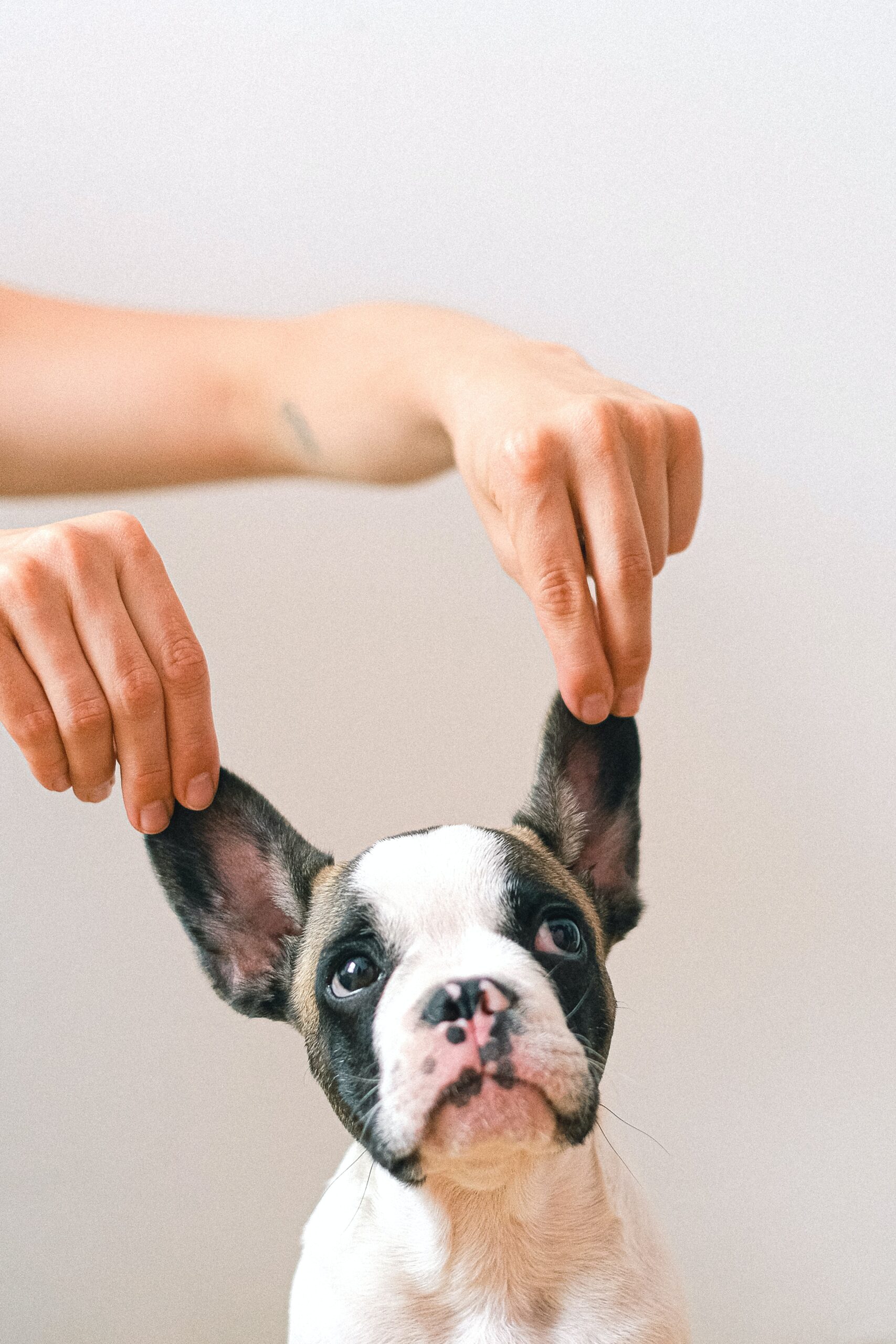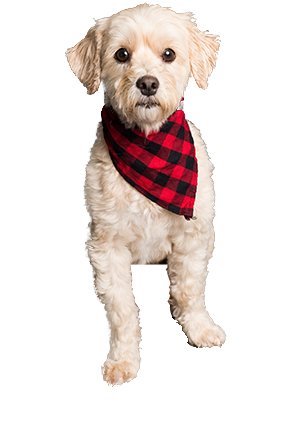
Brinks the Smiling Pit Bull: From Stray to Instagram Star
From Brooklyn stray to Instagram star, Brinks the smiling Pit Bull proves every pup deserves a second chance—and a forever home.
Sign Up To Receive Exclusive Emails, Content, & Offers.
Also get our Free "The Airplane Game" eBook
You have subscribed successfully!
Some error occured
Please fill all the required * fields.
Your information will remain secure and will not be shared with anyone.

When it comes to dog training, walking properly is one of the most important things you can teach your pet.
Dogs that walk on a loose leash are less likely to pull and get into trouble on walks, making the experience much more pleasant for both you and your pup.
Here are five tips to help train your dog to walk properly on a leash.
If you’re new to dog walking, it’s important to start with some basic commands.
Sit and stay are two of the most essential commands for any dog walker to know. Sit is a great command to use when you first start walking your dog.
It will help to keep them in one spot so you can get a good grip on the leash. Stay is also an important command to know.
It can be used when you need your dog to stay put, such as when you’re crossing the street or tying your shoe.
Once you have a good handle on these basic commands, you can move on to more advanced tricks and tips for dog walking.
Walking your dog on a leash is a great way to get some exercise and Bond with your furry friend. But if your dog isn’t used to walking on a leash, it can be a bit of a challenge. Here are a few tips to help you get started:
– Start by spending some time getting your dog comfortable wearing a collar. Let them wear it around the house for short periods of time, so they get used to the feel of it.
– When you’re ready to start walking, choose a quiet place with few distractions. Begin by walking slowly and letting your dog explore at their own pace. If they seem hesitant, try encouraging them with treats or positive reinforcement.
– Gradually increase the length and speed of your walks as your dog gets more comfortable with the leash. And remember to have patience. it takes time for dogs to learn how to walk on a leash. With a little practice, though, you’ll be out enjoying walks with your dog in no time!
Walking your dog is a great way to get some exercise and spend time together.
However, it’s important to use the right type of leash for your dog. A regular leash is typically more comfortable for your dog than a harness, and it gives you more control over where your dog goes.
With a harness, your dog may be able to pull you in different directions, which can be frustrating for both of you.
Additionally, a regular leash is less likely to rub against your dog’s skin and cause irritation.
In short, using a regular leash is generally better for your dog’s comfort and your ability to control them on walks.
As a dog owner, one of the first things you need to teach your pup is how to walk on a leash. And a key part of that training is teaching them that they need to walk behind you, not in front of you.
There are a few reasons for this. Dogs that walk in front of their owners are more likely to be aggressive.
It’s a sign of dominance. Allowing them to walk ahead of you can result in them becoming dominant over you.
If your dog is allowed to be dominant, it can lead to behavioral issues such as aggression and disobedience. Teaching your dog to walk behind you will help maintain a healthy balance of dominance within your relationship.
It’s also important to reinforce that you are the leader by always being in control of the situation – even when walking your dog. Dogs that walk in front of their owners are more likely to pull on the leash.
So if you’re tired of being pulled around by your pup, make sure they start walks by walking behind you with a regular leash and not a harness.. Here are a few of our recommendations below.
dog walking is a great way to bond with your dog while also getting some exercise.
However, it’s important to reward your dog for good behavior while walking, or else they may become restless and difficult to control.
A simple treat or toy can be a great way to reward your dog for walking nicely on a leash. Just make sure to bring along enough for the entire walk, as you don’t want your dog to get too excited and start pulling.
With a little patience and positive reinforcement, you can enjoy walks with your dog that are calm and enjoyable for both of you.
Training your dog takes time, patience and consistency.
Start with basic commands such as sit, stay and come, and be sure to praise your dog when they obey.
Once your dog has mastered the basics, you can begin to work on more difficult tricks or behaviors. As with any training, be sure to be patient and consistent; if you become frustrated, take a break and try again later.
Dogs respond best to positive reinforcement, so it’s important to reward your dog for good behavior. One way to do this is with dog walks; after a successful training session, take your dog for a leisurely walk around the block.
This will not only reinforce the desired behavior, but it will also provide quality bonding time between you and your furry friend.
dog walking is not an easy task. It requires a lot of patience, dedication, and time.
There are dog walkers out there who have years of experience and have seen it all. If you’re thinking about dog walking, or if you’re having trouble with your dog while dog walking, don’t be afraid to seek help from a professional.
There’s no shame in admitting that you need help, and a professional can often offer valuable insight and advice.
In addition, a professional dog walker can provide peace of mind by ensuring that your dog is well-behaved and happy while out on walks.
So if you’re struggling with dog walking, don’t hesitate to reach out to a professional for help.
If you’re looking to train your dog how to walk on a leash, these tips should help.
Start with basic commands like sit and stay, then gradually introduce your dog to walking on a leash. Reward your dog for good behavior while walking, and be patient and consistent when training your dog.
If needed, seek help from a professional trainer. Let us know in the comments if these tips helped you out!
Follow us on social media. Especially Youtube and Instagram. @My_dogluvs_me

From Brooklyn stray to Instagram star, Brinks the smiling Pit Bull proves every pup deserves a second chance—and a forever home.
Every so often, a story emerges that touches the hearts of many, highlighting the resilience and unwavering loyalty of our canine companions. This heartwarming tale of rescue and second chances takes us to the streets of Denver, where a mother Labrador and her puppy were found abandoned but were ultimately given another shot at happiness.
Denver’s bustling streets were the unlikely backdrop for an emotional scene when locals spotted a forlorn Labrador Retriever and her pup. Their unmistakable sadness was quickly noticed by passersby, many of whom were shocked at the sight of these innocent animals left to fend for themselves.
– Location of Discovery: An unkempt alleyway in a residential area
– State of the Dogs: Hungry, thirsty, and appearing confused
– Time of Day: Noted by locals during the morning rush
Witnessing these abandoned creatures tugged at the heartstrings of the community, prompting decisive action from animal lovers and organizations alike.
In situations like these, community action proves crucial. Several residents quickly banded together to ensure the safety and welfare of the dogs. Here’s how the community mobilized:
Local animal rescue groups scrambled to respond to the reports, realizing that time was of the essence to prevent the dogs from wandering into traffic or a more dangerous situation.
Denver Animal Rescue, known for their swift and compassionate responses to animals in distress, were soon on the scene. Their focused efforts can be attributed to the team’s experience and dedication to animal welfare.
– Initial Assessment: Health checks to ensure neither dog was injured
– Temporary Shelter: Quick relocation to a safe and nurturing environment
– Emotional Support: Ensuring both the mother and puppy received plenty of love and care
Once safely in the hands of the caring professionals at Denver Animal Rescue, the Labrador duo began their journey of healing. The rescue team shared regular updates to keep the community informed and engaged, rallying supporters from near and far.
The rehabilitation process was twofold—addressing physical health while also nurturing emotional well-being.
–
Vet assessments for emaciation and dehydration
–
Introducing the puppy to toys and other dogs
–
Encouraging trust and reducing anxiety
These efforts exemplify the profound impact of rescue work, showing that through care and kindness, even the most forlorn animals can blossom.
As the days turned into weeks, the Labrador and her puppy began to exhibit signs of recovery. Their coats grew shinier, their eyes brighter, and their tails wagged with an enthusiasm that spoke volumes about their newfound lease on life.
The ultimate goal of any rescue mission is to find a loving and permanent home for the animals. As news of their story spread, many expressed interest in adopting the pair.
– Adoption Drive: Held by Denver Animal Rescue to find suitable families
– Adopter Criteria: Willingness to accommodate both mother and puppy together
– Outcome: A marvelous match with a family who embraces their unique history
By the time a forever home was secured, these dogs had become local celebrities, forever changing perceptions on the importance of responsible pet ownership and community involvement in rescue missions.
This touching story of the Labrador and her puppy exemplifies the transformative power of compassion. They went from navigating desolate streets to basking in the glow of a loving home, all because a community chose action over apathy.
While the Labrador and her puppy have found joy once again, many animals remain in need of assistance. Here’s how you can get involved:
By embracing the spirit of compassion and responsibility, we can all play a part in creating happy endings for countless animals across the globe.
This uplifting tale in Denver serves as a beacon of hope, illustrating that every abandoned animal deserves a second chance. Let the story of this Labrador and her puppy inspire more to open their hearts and homes, proving that the bonds between humans and animals are indeed unbreakable. As we reflect upon their journey, let’s celebrate those who make rescue possible and continue to drive change for animals in need.

This is the inspiring story of Allister, a red nose pitbull who was rescued by one kind stranger.
